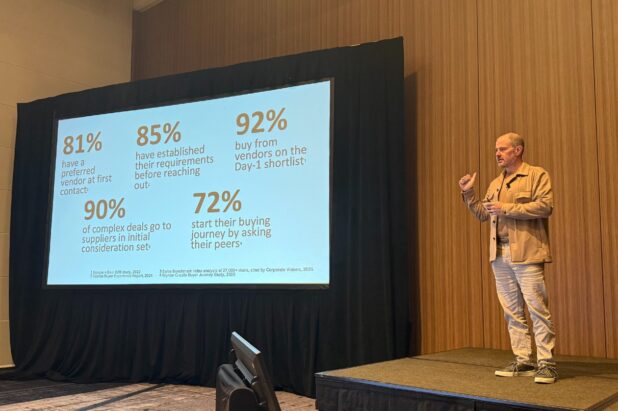As blogs, podcasts and niche industry publications compete ever harder with mainstream media and AI-driven search results, many PR and marketing professionals still rush in without a strategy, like a bull in a china shop. If you want to be relevant in the new places that matter, that needs to change.
Why the stakes for media relations with blogs and digital publications are higher
The digital media media landscape has evolved dramatically over the past 10 years. It’s not just about journalists’ inboxes anymore either. Along with search engines, AI agents are crawling your content, bots are filtering relevance, and generative AI (like ChatGPT, Gemini, Perplexity) decides what gets surfaced in response to user queries. It’s no longer about Google determining the right publication as a source, it’s about AI interpreting publications and serving up answers as a direct response to the query.
This means your pitch must now stand out not only to human editors and writers, but also to algorithms and AI content curators. When it comes to media relations and publication outreach in the modern AI age, here are 8 best practices to consider:
1. Hyper‑Relevance in Every Detail
Relevance is still non-negotiable-but in 2025, it must be laser-sharp. AI-driven tools can now analyze a blog’s prior content, tone, and topic focus to match with your story. If you neglect this step, your pitch will get filtered out by both people and machines.
Best practices:
- First, make sure you are pitching to the right blogs, podcasts and social media accounts – SparkToro is a handy tool for identifying which of these resources are favored by the audience you’re after
- Define explicitly how your pitch aligns with a blog’s themes and recent posts.
- Include a quick bullet that ties your story to a specific post or category-AI likes context too.
2. Authentic Personalization, Powered by AI & Human Insight
- Template outreach pitches won’t cut it anymore. Beyond using the recipient’s name, craft a relevant intro showing you’ve followed their work, complemented by AI-powered insight (e.g., “Noticed you just covered AI in martech. Our story dives deeper into the brand-building angle”).
- AI tools can surface journalist preferences and optimize subject lines-but only you can ensure relevance, tone, and credibility .
3. Make It Easy For Both Humans & Algorithms
Long wires of copy and pasted text are outdated. Instead:
- Lead with a strong one-sentence hook.
- Use 2-3 punchy paragraphs: problem, data/insights, resources .
- Link to the full release, multimedia assets, blog/story pages.
- For AI, include structured metadata (schema, keywords, embedded resources) so your content is AI-search friendly .
4. Use Thoughtful “Swag” & Content Assets
For blogs and podcasts, tangible items can still work to get attention. That includes samples, books, swag with brand appeal. But in 2025, always pair physical items with digital assets:
- Custom industry reports or AI-generated infographics
- Video snippets or podcast mini‑episodes
- Quotes from niche experts included
These formats are preferred by modern bloggers, and AI can index transcripts and metadata .
5. Embrace Persistent, Intelligent Follow‑Up
As always has been the case, don’t drop a pitch and vanish. But do follow up thoughtfully:
- Use AI‑backed tools to track if the email was opened or if any links were clicked.
- If your pitch wasn’t picked up, tweak angle or data and retry later with clear relevance.
- Continue the relationship by sharing their content, commenting on articles (SubStack, Blog, Podcast, etc), comment and engage with their posts on LinkedIn
6. Go Niche. Go Micro. Go Community.
Big publications aren’t the only game for securing relevant media pickups anymore. Audience attention is more fragmented than ever. There’s massive opportunity in niche blogs, LinkedIn newsletters, podcasts, community forums like Reddit and Discord, many of which are now indexed by AI as well as Google.
Strategy:
- Map out hyper-targeted micro-audiences.
- Pitch niche outlets or podcasts where your expertise truly shines.
- Build credibility in tight-knit spaces where AI voices echo human trust.
7. Integrate Data-Driven Measurement & GEO
Outcomes are critical. Relying solely on impressions won’t cut it.
- Use CRM, Google Analytics, or PR monitoring tools to tie your blog pitches to outcomes including traffic, leads, and mentions .
- Apply Generative Engine Optimization (GEO) tactics: use schema, structured content, clear transcripts, resource links-so AI systems pick up and reference your posts in generative search results .
8. Ethical & Effective Use of AI
Remember that in the current age of media relations and outreach, AI is your ally, not your replacement. Trusted voices, human judgment, and ethical practices matter more than ever.
- Always review and refine AI-generated drafts.
- Use AI to research your audience or sensitive topics.
- Run “backlash tests” with AI to vet pitches for tone, inclusivity, and risk .
- Be transparent when you’ve incorporated AI in your process.
The Future of Media Outreach
In 2025, successful blog, podcast and digital publication pitching is a fusion of:
- Human insight – authenticity, real relationships, niche fluency
- AI efficiency – smart targeting, metadata optimization, performance tracking
- Outcome focus – measurement, visibility in AI search, credible content ecosystems
It can be tempting with all of the AI-powered email pitching options available, but be sure to lean in to quality interactions vs. volume. Build relationships. Empower your pitch with data and AI, but let your human connection, storytelling and authenticity drive the strategy. That’s how you can get the media pick-ups you’re looking for from human editors and AI alike.



